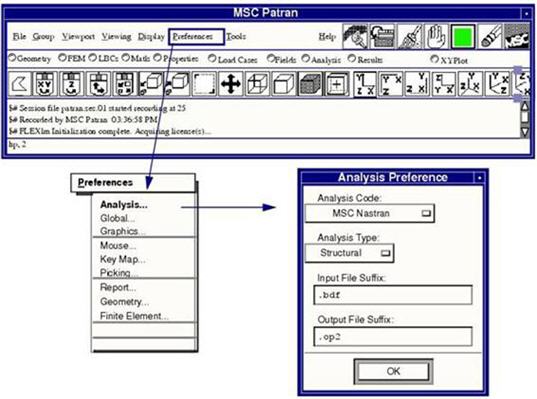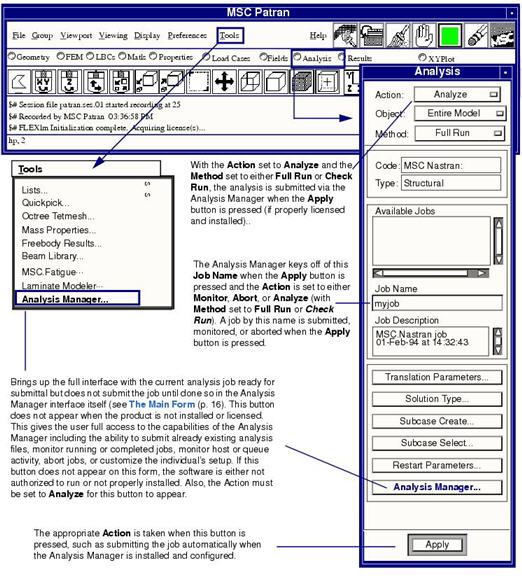XXXXXXXXXXXXXXXXXXXXXXXXXXXXXXXXXXXXXXXXXXXXXXXXXXXXXXXXXXXXXXXXXXXXXXXXXXXXXXXXXXXXXXXXXXXXXXXXXXXXXXXXXXXXXXXXXXXXXXXXXXXXXXXXXXXXXXXXXXXXXXXXXXXXXXXX''"> Quick Overview
Before Patran’s Analysis Manager can be used, it must be installed and configured by the system administrator. See
System Management for more on the installation and set-up of the module.
In so doing, the system administrator starts the Analysis Manager’s queue manager (QueMgr) daemon or service, which is always running on a master system. The queue manager schedules all jobs submitted through the Analysis Manager. The master host is generally the system on which Patran or an analysis module was installed, but does not have to be.
The system administrator also starts another daemon (or service) that runs on all machines configured to run analyses, called the remote manager (RmtMgr). This daemon/service allows for proper communication and file transfer to/from these machines.
Users that already have analysis input files prepared and are not using Patran may skip to
The Main Form after reviewing the rules for input files for the various submittal types in this Chapter.
When using Patran, in general, the user begins by setting the Analysis Preference to the appropriate analysis, such as MSC Nastran, which is available from the Preferences pull down menu on the top menu bar.
Once the Analysis Preference is set and a proper analysis model has been created in Patran, the user can submit the job. Generally, the submittal process takes place from the Analysis application form when the user presses the Apply button. The full interface with access to all features of Patran’s Analysis Manager is always available, regardless of the Preference setting, from the Tools pull down menu or from the Analysis Manager button on the Analysis form. The location of the submittal form is explained throughout this chapter for each supported analysis code.


